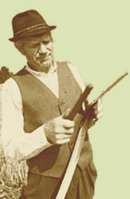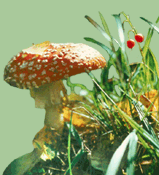The year devoted to the poles
Timo Palo reminds his days on the drifting research ship called Tara during the 4th international polar year. The polar year is a giant research project that lasts until 2009 and focuses on thorough research of both the Arctic and Antarctica. He admits, however, that often the scientific studies and cooperation are smothered by the economical and political interests of countries, replacing meaningful discussions with power fights. The reason lies in the large natural resources (especially oil) and the possible sharing of these between countries.
Polar Regions have very influential roles in the climate- and ecosystems of the whole world, especially of the regions on higher latitudes. The author, who stayed on Tara for 6 months, describes the research methods and the gathered data. It was interesting that during the summer months most of the ice around the ship melted. It is possible that ice-free summers will reach the Artic Sea already in a few decades, due to the global warming.
Estonian Nature enquires
Mari Jüssi explains why this years negative deed prize went to the Municipality of Tallinn.
Uno Siiberg writes about creating the Rahkvälja Landscape Protection Area in Harju County.
Essay: Thinking as a mountain by Aldo Leopold
Timo Maran has translated the essay and added some comments.
Estonian manors: Polli Park through the ages
Linda Lamp describes the colourful history and the sad-looking present-day of the Polli Park in the Viljandi County. The Polli manor was founded in the end of the 17th century and the park was started during the second half of the 18th century. As all old parks, the Polli Park has gone through many changes. Many parts of the park are now grown into bushes. While records show that originally there were 240 species of trees and bushes, only about 52 species have survived to day.
The Peeda River Idaoja Stream Natura site
Raul Pihu and Silvia Pihu introduce a Natura-site located in the southern part of the Tartu County, created to protect river sections with valuable fauna and little human influence. The Peeda River is a tributary of the River Porijõgi running into the River Emajõgi. The Natura-site encompasses an 8 km-long section on the middle ad lower course of the Peeda River and a 2 km-long section on the Idaoja stream.
Practical tips: Our mushrooms: Boletes I
Vello Liiv has photographed the Estonian boletes and in his first story he outlines the main characteristics of the mushrooms. Four species from the genus Boletus are described in detail. The genus Boletus is the most species-rich of the boletes.
Estonian rarities: Lungwort Pulmonaria angustifolia
Rein Kalamees admits that this species with a southern distribution can survive in Estonia only with some human help. The article presents a short overview of the species which has only 3 populations in Estonia.
Interview: Ranniku, the guide in nature protection and hiking trails
Toomas Jüriado has interviewed Veljo Ranniku, a legendary nature protectionist.
Hiking trail:
A journey to the town of our country and the mire
Katre Palo takes the reader to the Avaste nature protection area on the border of the Lääne and Pärnu Counties, known in history as the Soontagana earthen town, surrounded by mires. The trail passes through former wooded meadows, runs along the ancient fields and past an ancient village to the Soontagana earthen town, dating back from the 10th-12th century. Behind the town hill lays a giant mire expanse. The boardwalk takes you through massive reed bed back to the foot of the town hill.
A bird expedition to Thailand
Uku Paal went to the worlds favourite tourism destination and visited the numerous local protected areas with their colourful bird fauna. Thailand is a country of diverse and most picturesque nature: from jungles to mountains, from seashores to dense rainforests. Most of the about 1000 bird species are exotic and often difficult to fix. The article is provided with several photographs of the Thailand bird beauties.
Jays
Sven Zaèek tells the difference between two jays found in Estonia: the Eurasian Jay and the Siberian Jay. While the first one is most common here, the Siberian Jay can only be met rarely, since there are no records of its nesting in Estonia. The author shot his pictures of the Siberian Jay in Finland.
| 

![[IN ENGLISH]](images/gb.gif)





